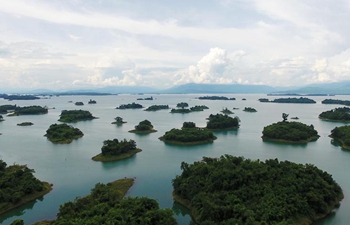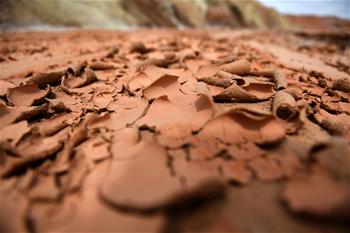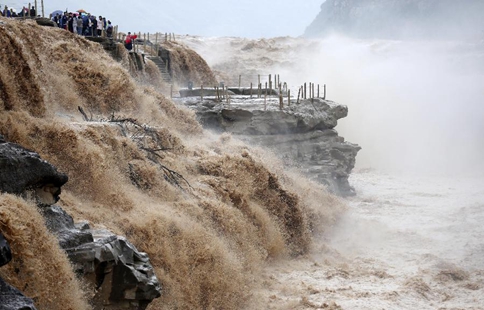LOS ANGELES, Sept. 7 (Xinhua) -- U.S. researchers have reported Thursday the first detection of sea level "fingerprints" in ocean observations: detectable patterns of sea level variability around the world resulting from changes in water storage on Earth's continents and in the mass of ice sheets.
The findings, published Thursday in the journal Geophysical Research Letters, may help scientists to determine how much the sea level will rise at any point on the global ocean as a result of glacier ice melt, according to the U.S. National Aeronautics and Space Administration (NASA)'s Jet Propulsion Laboratory (JPL).
As ice sheets and glaciers undergo climate-related melting, they alter Earth's gravity field, resulting in sea level changes that aren't uniform around the globe. The resulting pattern of sea level change is known as a sea level "fingerprint".
"Scientists have a solid understanding of the physics of sea level fingerprints, but we've never had a direct detection of the phenomenon until now," said co-author Isabella Velicogna, professor of Earth system science at the University of California, Irvine (UCI), and JPL research scientist.
To calculate sea level fingerprints associated with the loss of ice from glaciers and ice sheets and from changes in land water storage, researchers from JPL and UCI used gravity data collected by the twin satellites of the U.S./German Gravity Recovery and Climate Experiment (GRACE) between April 2002 and October 2014.
During that time, the loss of mass from land ice and from changes in land water storage increased global average sea level by about 0.07 inch (1.8 millimeters) per year, with 43 percent of the increased water mass coming from Greenland, 16 percent from Antarctica and 30 percent from mountain glaciers, according to the study.
The scientists then verified their calculations of sea level fingerprints using readings of ocean-bottom pressure from stations in the tropics.

















